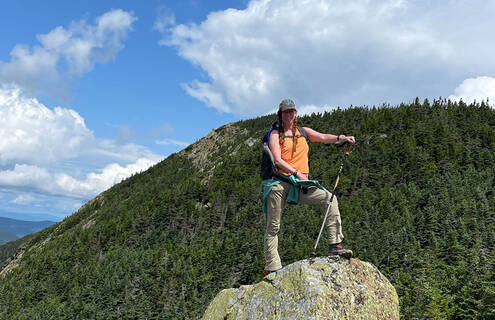
Experiencing the outdoors can be therapeutic in many ways—offering fresh air, exercise and natural beauty. New Hampshire and Vermont are home to a variety of hiking trails for beginning and experienced hikers. Cool off on a hot summer day at the peak of a mountain–or take in a display of fall colors along a local rail trail. Alison Trow, PT, CSCS, a physical therapist at Dartmouth Hitchcock Clinics Heater Road and avid hiker, shares what you need to know about hiking safely.
Choosing your path
Hiking can be as easy or hard as you want. The distance and elevation of a trail determine the difficulty level of a hike. Resources are available to help you choose what might work best for you. Start with local town maps or use apps like All Trails and GAIA GPS (both have free basic versions). The Appalachian Mountain Club (AMC) guide has excellent maps of trails along the Appalachian Trail that run through sections of New Hampshire and Vermont.
Basic hiking safety
- Always carry a paper map! Don't rely on your phone. Some areas may not have strong cell signals, and there is always a risk that your phone battery could run out.
- Always carry the 10 essentials recommended by the U.S. National Park Service.
- Have a safety plan and let someone know where and when you are hiking.
- If you are hiking in New Hampshire, you can purchase a Hike Safe Card from New Hampshire Fish and Game. Purchasing this card ensures you won't be charged for rescue services if ever needed, and every purchase supports New Hampshire Fish and Game search and rescue efforts.
Preparing your body
Hiking is a relatively safe outdoor activity, but just like any exercise activity, there are steps you can take to prevent injury.
Practice. Hiking is mostly step-ups and step-downs, so practice using a stairmaster at the gym or a step in your home.
Build endurance. Start with smaller, shorter hikes and gradually increase your distance and elevation.
Stretch. Before and after your hike, take the time to give your muscles a stretch.
Equipment. Use walking poles to reduce strain on your hips and knees and to increase stability and balance.